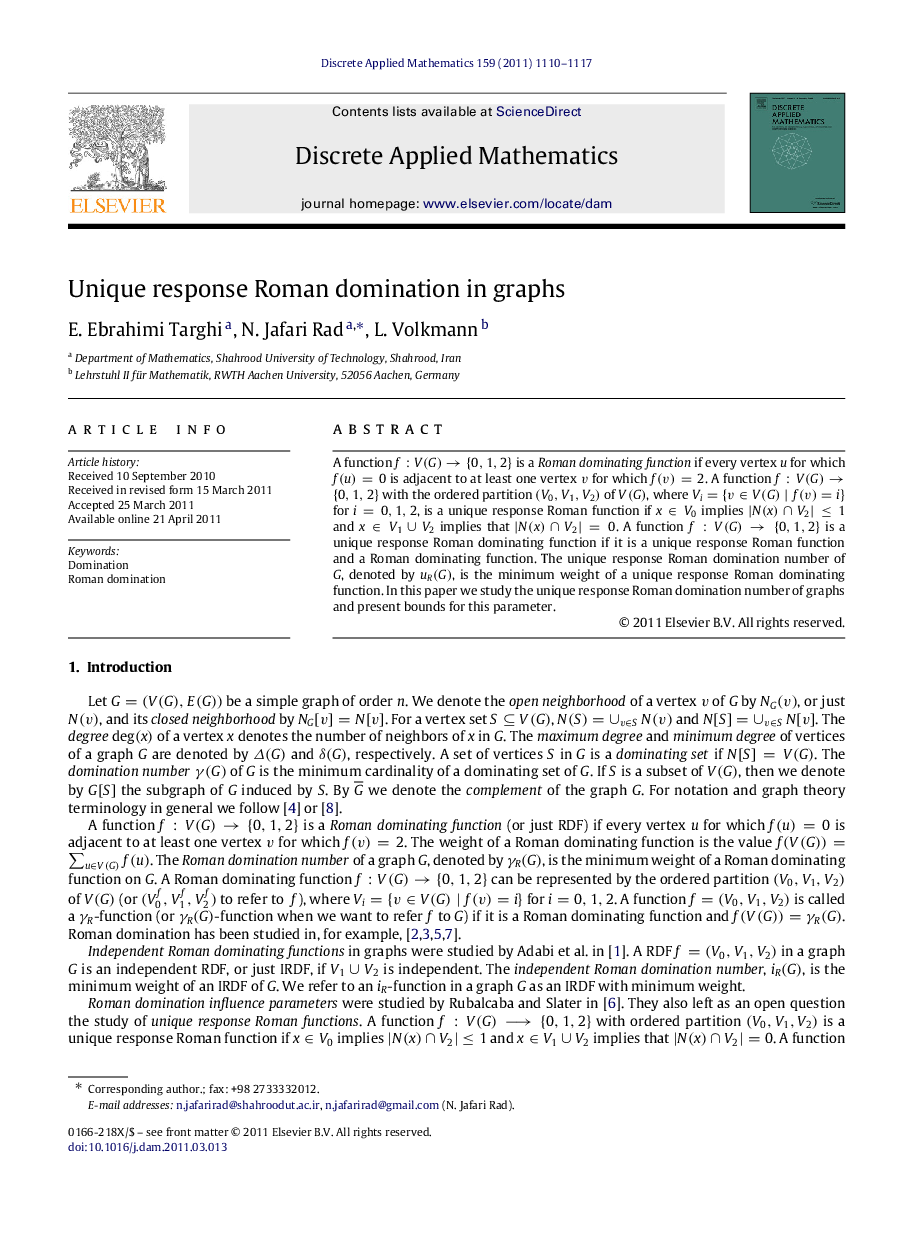| Article ID | Journal | Published Year | Pages | File Type |
|---|---|---|---|---|
| 420255 | Discrete Applied Mathematics | 2011 | 8 Pages |
A function f:V(G)→{0,1,2}f:V(G)→{0,1,2} is a Roman dominating function if every vertex uu for which f(u)=0f(u)=0 is adjacent to at least one vertex vv for which f(v)=2f(v)=2. A function f:V(G)→{0,1,2}f:V(G)→{0,1,2} with the ordered partition (V0,V1,V2)(V0,V1,V2) of V(G)V(G), where Vi={v∈V(G)∣f(v)=i}Vi={v∈V(G)∣f(v)=i} for i=0,1,2i=0,1,2, is a unique response Roman function if x∈V0x∈V0 implies |N(x)∩V2|≤1|N(x)∩V2|≤1 and x∈V1∪V2x∈V1∪V2 implies that |N(x)∩V2|=0|N(x)∩V2|=0. A function f:V(G)→{0,1,2}f:V(G)→{0,1,2} is a unique response Roman dominating function if it is a unique response Roman function and a Roman dominating function. The unique response Roman domination number of GG, denoted by uR(G)uR(G), is the minimum weight of a unique response Roman dominating function. In this paper we study the unique response Roman domination number of graphs and present bounds for this parameter.
